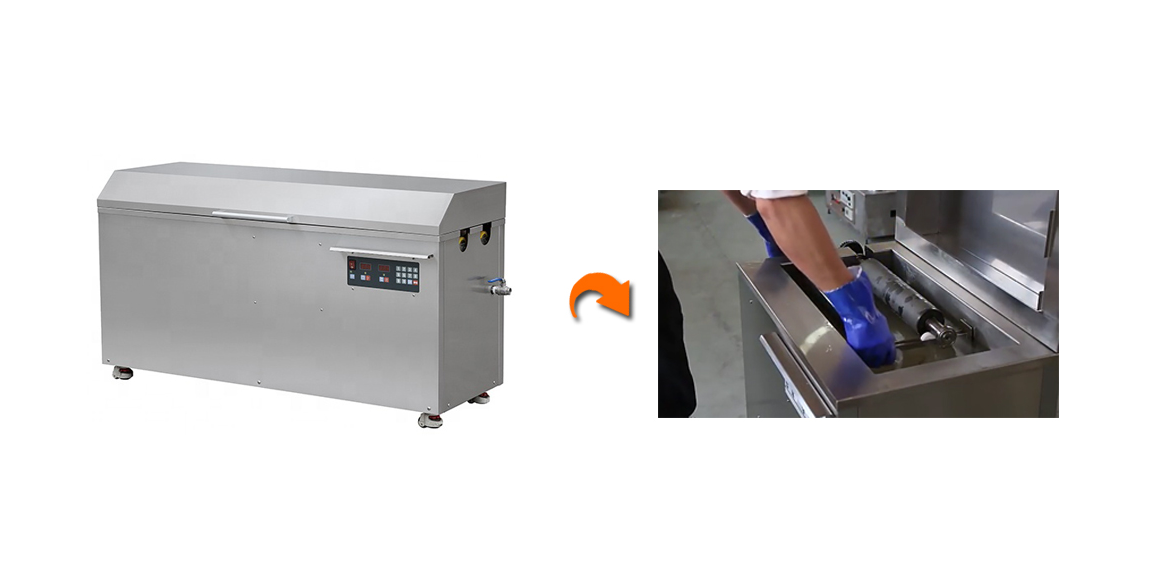In the fast-paced world of manufacturing, efficiency and precision are paramount. Semi-rotary die cutting, a specialized technique, has emerged as a game-changer in the quest for high-quality, cost-effective production. This method, often overshadowed by its fully rotary counterpart, offers unique advantages that cater to specific industry needs. In this article, we delve into the intricacies of semi-rotary die cutting, exploring its working principle, benefits, and applications across various sectors. Whether you’re a seasoned engineer or a curious entrepreneur, understanding this technology could be the key to revolutionizing your production line.
Understanding semi-rotary die cutting
Semi-rotary die cutting is a specialized process used in the manufacturing of intricate and precise shapes from a variety of materials, including paper, plastic, and metal. Unlike traditional rotary die cutting, which involves a full rotation of the die in each cycle, semi-rotary die cutting employs a more complex mechanism that combines elements of both rotary and flatbed die cutting. This technique is particularly beneficial for producing parts that require high accuracy and fine detailing, such as labels, gaskets, and decorative elements.
The process begins with the material being fed into the machine, where it is then positioned between the upper and lower dies. The upper die, mounted on a rotating cylinder, moves in a circular motion, while the lower die remains stationary. This setup allows for the precise cutting of the material as it passes through the machine. The semi-rotary die cutting machine is equipped with advanced control systems that enable operators to adjust various parameters, such as the speed of the die, the pressure applied, and the alignment of the material. These adjustments are crucial for ensuring the quality and consistency of the finished product.
The mechanics of semi-rotary die cutting
The mechanics of semi-rotary die cutting involve a sophisticated interplay of mechanical components that work together to achieve the desired result. At the heart of the machine is the die assembly, which consists of a rotating cylinder and a fixed anvil. The die, mounted on the cylinder, is designed with a specific shape that corresponds to the desired cut. As the cylinder rotates, the die comes into contact with the material, pushing it against the anvil. This action creates a sharp, clean cut, allowing for the precise shaping of the material.
In addition to the die assembly, the machine also includes a feed mechanism that ensures the material is fed into the cutting area at a consistent rate. This mechanism can be adjusted to accommodate different material thicknesses and sizes. The machine’s control system allows operators to fine-tune the feed rate, as well as other parameters, such as the pressure applied by the die and the speed of the cylinder. These adjustments are critical for optimizing the cutting process and ensuring the quality of the finished product.
Key features and benefits of semi-rotary die cutting
Semi-rotary die cutting offers several key features and benefits that make it an attractive option for manufacturers. One of the primary advantages is its ability to produce high-quality, intricate cuts with minimal waste. This is achieved through the precise alignment of the die and anvil, as well as the machine’s advanced control system, which allows for fine-tuning of various parameters.
Another benefit of semi-rotary die cutting is its versatility. The machine can be easily adjusted to accommodate different materials, thicknesses, and sizes, making it suitable for a wide range of applications. This flexibility is particularly valuable for businesses that require small-batch production runs or need to frequently change their product offerings.
In addition to its precision and versatility, semi-rotary die cutting is also known for its efficiency. The machine’s design minimizes downtime between production runs, allowing for faster turnaround times and increased productivity. This efficiency is further enhanced by the machine’s ability to perform multiple operations in a single pass, such as cutting, perforating, and scoring.
Applications of semi-rotary die cutting in various industries
Semi-rotary die cutting is used across a wide range of industries, each benefiting from its unique capabilities. In the automotive industry, for example, it is used to produce gaskets, seals, and other components that require precise cutting and shaping. The aerospace industry also utilizes this technique for creating lightweight, durable parts that meet strict safety and performance standards.
In the consumer goods sector, semi-rotary die cutting is employed to manufacture labels, stickers, and packaging materials. The ability to produce intricate designs with minimal waste makes it an ideal choice for companies looking to enhance their product presentation while minimizing environmental impact.
Healthcare is another industry that has embraced semi-rotary die cutting. Medical devices, surgical instruments, and disposable products often require high levels of precision and consistency, making this technique a perfect fit. The ability to produce small-batch runs with tight tolerances also allows for rapid prototyping and customization, which is crucial in this fast-paced sector.
Conclusion
Semi-rotary die cutting stands out as a sophisticated and efficient manufacturing process that bridges the gap between traditional rotary die cutting and flatbed die cutting. Its ability to produce intricate, high-quality cuts with minimal waste makes it an invaluable tool across various industries, from automotive to healthcare. The versatility and efficiency of this technique not only enhance product quality but also contribute to sustainability by reducing material waste. As industries continue to evolve and demand more precise and customizable solutions, semi-rotary die cutting is poised to play a pivotal role in shaping the future of manufacturing.
Türkçe
English
العربية
Français
Русский
Español
Português
Deutsch
italiano
日本語
한국어
Nederlands
Tiếng Việt
ไทย
Polski
አማርኛ
ພາສາລາວ
ភាសាខ្មែរ
Bahasa Melayu
ဗမာစာ
தமிழ்
Filipino
Bahasa Indonesia
magyar
Română
Čeština
Монгол
қазақ
Српски
हिन्दी
فارسی
Kiswahili
Slovenčina
Slovenščina
Norsk
Svenska
українська
Ελληνικά
Suomi
Հայերեն
עברית
Latine
Dansk
اردو
Shqip
বাংলা
Hrvatski
Afrikaans
Gaeilge
Eesti keel
Māori


















